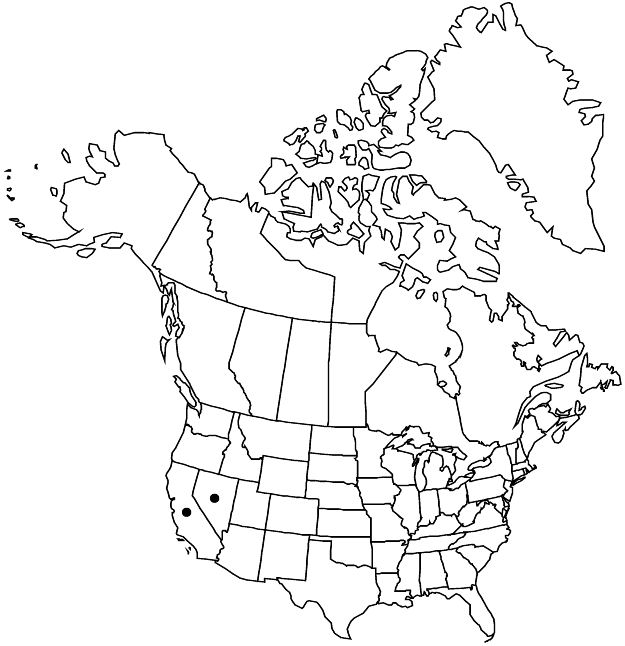Ivesia jaegeri
Bull. Torrey Bot. Club 56: 165. 1929.
Plants green, ± tufted to ± matted, often forming hanging clumps, sometimes rosetted. Stems pendent or prostrate to ascending, 0.3–1.5 dm. Basal leaves ± loosely cylindric to weakly planar, 2–8 (–10) cm; sheathing base not or sparsely strigose abaxially; petiole 0.5–4 cm; lateral leaflets (1–) 4–6 (–8) per side, ± overlapping at least distally, ± flabellate, 2–6 (–7) mm, incised nearly to base into 3–6 oblanceolate to narrowly obovate lobes, apex not or scarcely setose, surfaces ± sparsely short-pilose, ± glandular; terminal leaflets indistinct. Cauline leaves (1–) 2; blade well developed. Inflorescences (1–) 3–15-flowered, open, (0.5–) 1.5–4 (–7) cm diam. Pedicels 5–30 mm. Flowers 5–11 mm diam.; epicalyx bractlets 5, lanceolate, 1–2 mm; hypanthium patelliform, 1 × 2–4 mm; sepals 2–3 mm, ± acute; petals yellow, narrowly oblanceolate, 1.5–2 mm; stamens 20, filaments 1–1.5 (–1.8) mm, anthers yellow, subrotund, 0.2–0.3 mm; carpels 3–8, styles 1.5–2 mm. Achenes tan to light-brown, 1–2 mm, ± rugose, ± carunculate.
Phenology: Flowering summer.
Habitat: Dry, rocky outcrops of limestone origin, usually crevices of more or less vertical protected cliffs or boulders, mainly in conifer woodlands
Elevation: 1600–3600 m
Discussion
Of conservation concern.
Ivesia jaegeri is known only from the Spring Mountains, Clark County, Nevada, and the Clark Mountains, San Bernardino County, California.
Selected References
None.
Lower Taxa
"thin" is not a number."dm" is not declared as a valid unit of measurement for this property."dm" is not declared as a valid unit of measurement for this property."dm" is not declared as a valid unit of measurement for this property.
